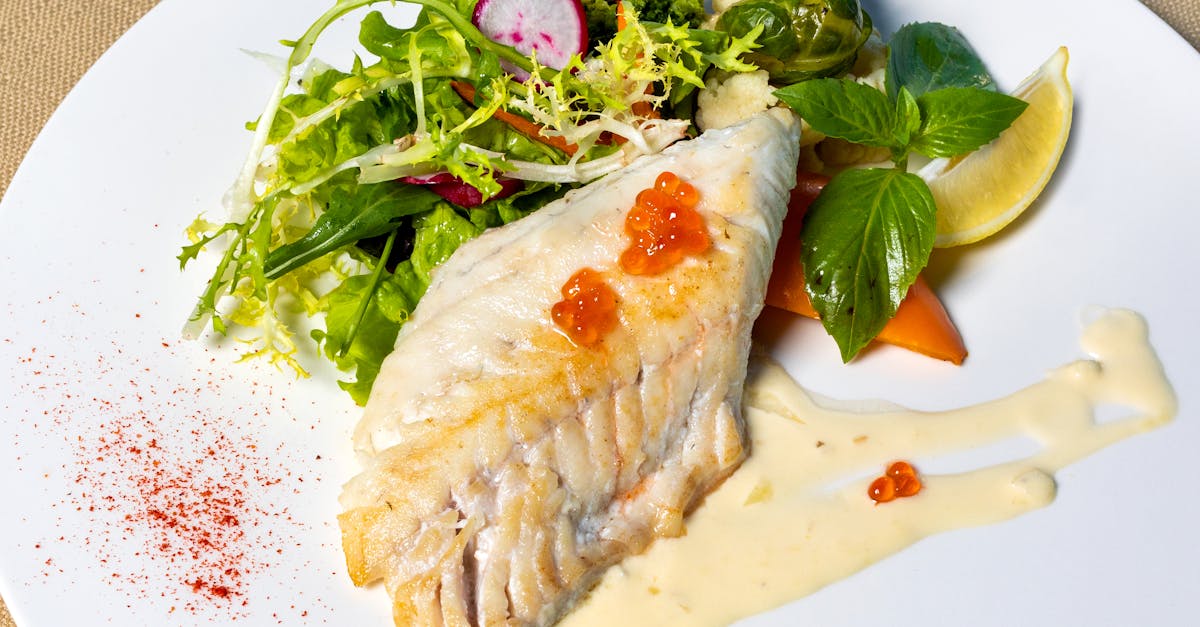How to choose sustainably sourced frozen haddock fillet

Supporting Local Fisheries
Choosing seafood from local fisheries plays a crucial role in promoting sustainable practices. Local fisheries often adhere to strict environmental guidelines, ensuring that fish populations remain healthy. Supporting these fisheries can help preserve marine ecosystems while also stimulating the local economy.
Purchasing from nearby sources reduces transportation emissions and strengthens community ties. Many local fisheries prioritize responsible fishing methods, which can contribute to better quality seafood. This alignment with sustainability not only benefits the environment but also offers consumers fresher options that are harvested responsibly.
Benefits of Buying Locally Sourced Seafood
Purchasing seafood from local sources supports the regional economy and promotes sustainability. Local fisheries often adhere to responsible fishing practices, which helps maintain fish populations and the health of marine ecosystems. Buying from these fisheries also reduces the carbon footprint associated with transporting seafood over long distances. Consumers can feel confident that their choices support fisheries that prioritise environmental stewardship.
Additionally, local seafood tends to be fresher than items shipped from afar. The shorter supply chain means fish is often harvested and delivered within a day, ensuring optimal quality and flavour. There is also a greater opportunity for consumers to engage with fishmongers and learn about the sourcing practices behind their products. This connection fosters a sense of community and encourages more informed decision-making about the types of seafood being consumed.
Researching Brands and Suppliers
When considering frozen haddock fillet, understanding the source is crucial. Begin by investigating companies that prioritise sustainability in their fishing practices. Look for certifications from reputable organisations that endorse responsible harvesting methods. This information is often available on the brand’s website or product packaging. Engaging with customer service can provide clarity on their sourcing and sustainability practices.
Another effective approach is to read consumer reviews and testimonials about various brands. Feedback from other buyers can offer insights into the quality and reliability of the seafood. Social media platforms also serve as a vital tool for discovering companies that align with your values. Participating in discussions and following industry trends can enhance your awareness of sustainable options in the market.
How to Find Transparent Companies
When seeking companies committed to transparent sourcing practices, start by examining their websites and product labels. Look for detailed information about their supply chains, including where and how the fish is caught. Verification from third-party certifications can also indicate reliable practices. Certifications from recognised organisations provide reassurances regarding sustainability and ethical fishing methods.
Engaging with the companies directly can offer additional insights. Reputable suppliers should be open to answering questions about their sourcing policies and fishing methods. A quick phone call or an email inquiry can reveal not only their transparency but also their dedication to responsible fishing. Authentic businesses often share their stories and the challenges they face in maintaining sustainable practices.
Cooking Techniques for Frozen Haddock
Frozen haddock fillets offer a versatile base for various cooking techniques, retaining their flavour and texture when prepared correctly. Baking is a straightforward method, allowing the fish to cook evenly while developing a gentle crust on the surface. Seasoning the fillets with herbs, lemon, and a drizzle of olive oil before placing them in the oven elevates their taste. Alternatively, steaming is another health-conscious approach, preserving moisture and essential nutrients while infusing the fish with the delicate flavours of your choice.
For those who prefer a crisp outer layer, pan-frying is an excellent option. A hot skillet with a small amount of oil will allow the fillets to develop a delightful golden crust, perfect for enhancing the taste profile. Grilling is an adventurous technique, imparting a smoky flavour to the fish, which can be complemented with a tangy salsa or dressing. Regardless of the method chosen, ensuring proper thawing before cooking is crucial for maintaining the fish's integrity.
Best Methods for Preparing Frozen Fillets
Preparing frozen haddock fillets can be both simple and rewarding. One effective method is to bake the fillets, which helps retain their moisture and flavour. Preheat your oven to 200°C. Place the fillets in a baking dish, drizzle with olive oil, and season with salt and pepper. Cover with foil to prevent drying out, then bake for about 20 minutes until the fish is opaque and flakes easily with a fork.
Another popular technique is pan-frying, which adds a delightful crispiness to the exterior. Start by heating a little oil in a non-stick frying pan over medium heat. Season the thawed fillets and carefully place them in the hot pan. Cook for approximately 3-4 minutes on each side until golden brown. This method allows for flexibility with seasonings, making it easy to customise the dish to your taste.
FAQS
What does sustainably sourced frozen haddock mean?
Sustainably sourced frozen haddock refers to haddock that has been caught through methods that do not harm the environment, ensuring the fish population remains healthy and ecosystems are preserved.
Why is it important to support local fisheries when buying seafood?
Supporting local fisheries helps boost the local economy, reduces the carbon footprint associated with transporting seafood over long distances, and promotes sustainable fishing practices.
How can I identify transparent companies when choosing seafood brands?
You can identify transparent companies by checking for certifications from reputable organisations, reviewing their sustainability practices on their website, and looking for detailed sourcing information and traceability of their products.
What are the best methods for cooking frozen haddock fillets?
The best methods for cooking frozen haddock fillets include baking, pan-frying, grilling, or steaming. Each method helps retain the fish's moisture and enhances its flavour without compromising its texture.
Can I find sustainable frozen haddock in supermarkets?
Yes, many supermarkets now offer sustainably sourced frozen haddock. Look for labels that indicate sustainable fishing practices or check the seafood section for brands that prioritise sustainability.
Related Links
How to read certifications and labels on frozen haddock filletRoundup of certifications for sustainable seafood including frozen haddock fillet
Review of the best brands of frozen haddock fillet